This is where the sparks are flying!
When it comes to research and development, the UNITED GRINDING Group relies on regular exchanges with employees and external research institutions.
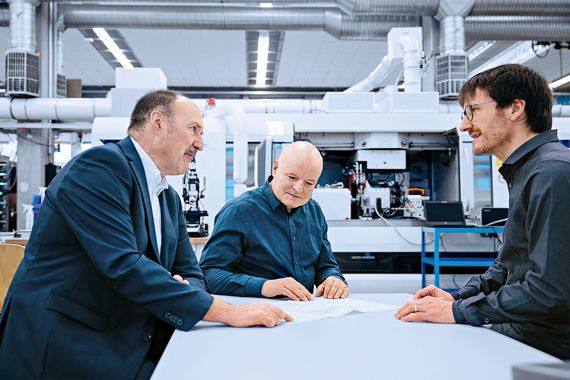
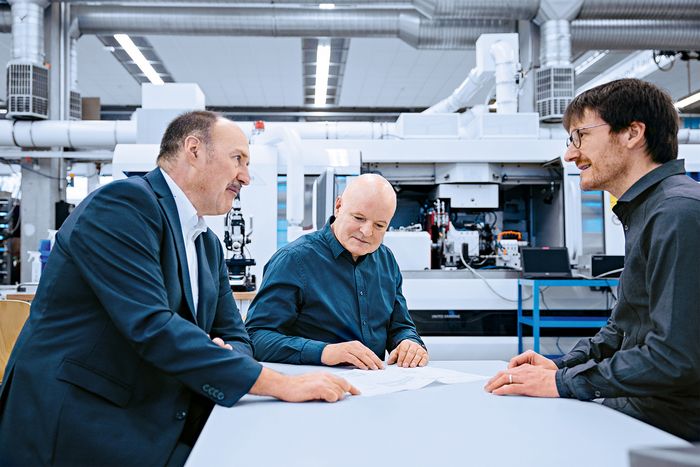
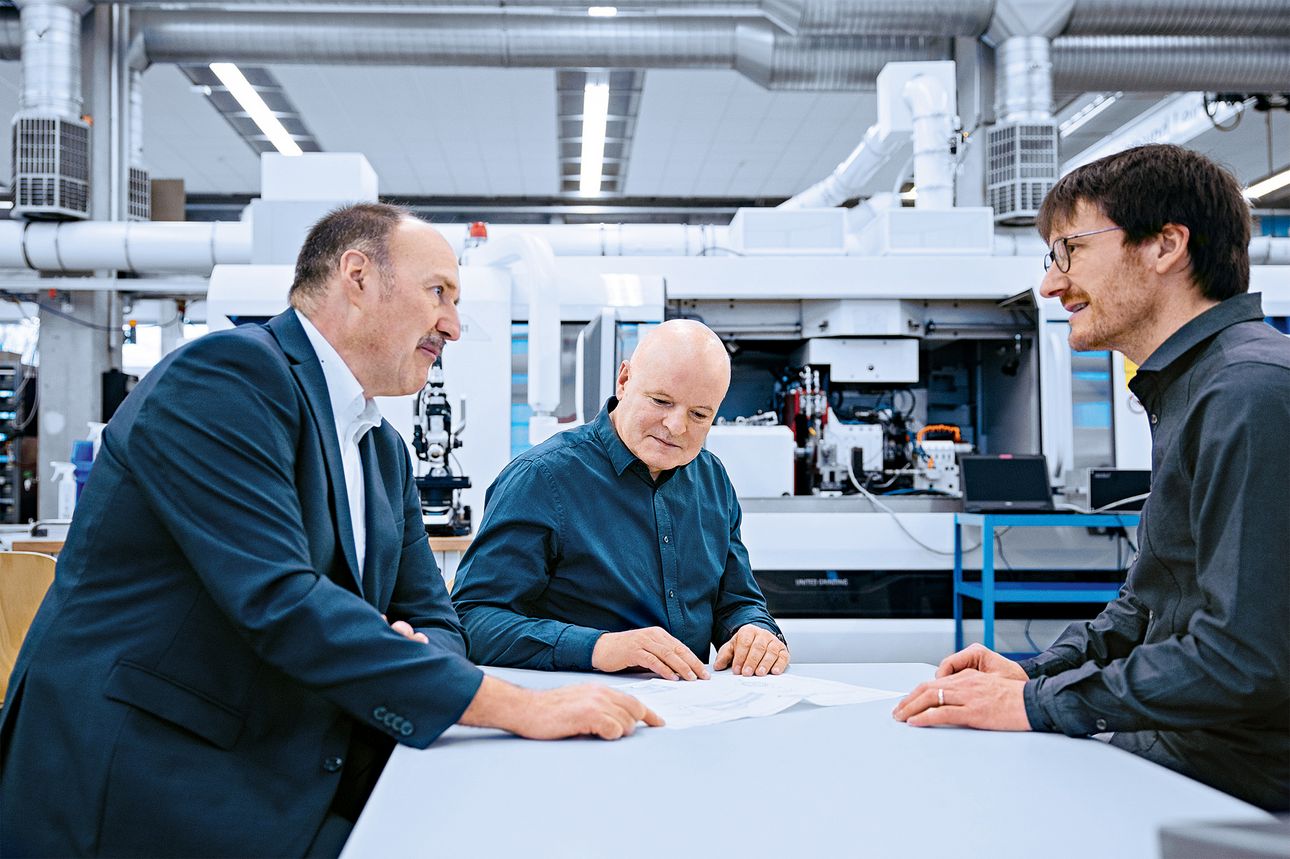
HE WAS SOMEWHERE ON THE BALTIC SEA WHEN Thomas Engelfried looked at the radar display on the bridge of his sailboat and wondered: why wouldn’t this also be good for machine tools? “Radar waves can penetrate through liquids, whether rain clouds or coolant. This must make it possible to precisely measure the grinding wheel in the micron range, even during machining,” he explains. Until now, only tactile measurement has been used during processing breaks, which leads to significantly higher non-productive times. And because Engelfried manages the “Experimental and System Testing” department at WALTER, he immediately wrote an initial concept for technical implementation and discussed the project with his colleagues from the UNITED GRINDING Group – in fact, at exactly the same type of meeting taking place today at STUDER in Thun, Switzerland.
The Technology & Applications team is a group of employees from all companies of the UNITED GRINDING Group from the areas of research, development, testing, and technology. Its purpose is to bundle joint expertise for the benefit of the customer. The meetings take place twice a year alternately at various UNITED GRINDING locations, and today 19 experts have traveled to STUDER in Thun to exchange information on the latest technologies and projects. “The development of new technologies and processes is extremely important for our success and that of our customers,” says Frank Fiebelkorn, Head of Research and Technology at STUDER. He initiated and moderated these meetings. He is currently leading his colleagues Engelfried and Christian Josi, Head of Digital Engineering at UNITED GRINDING, through the in-house TechCenter – an entire floor full of machines and systems for testing and developing innovative products and grinding applications.
Thanks to C.O.R.E., machines also work as a team
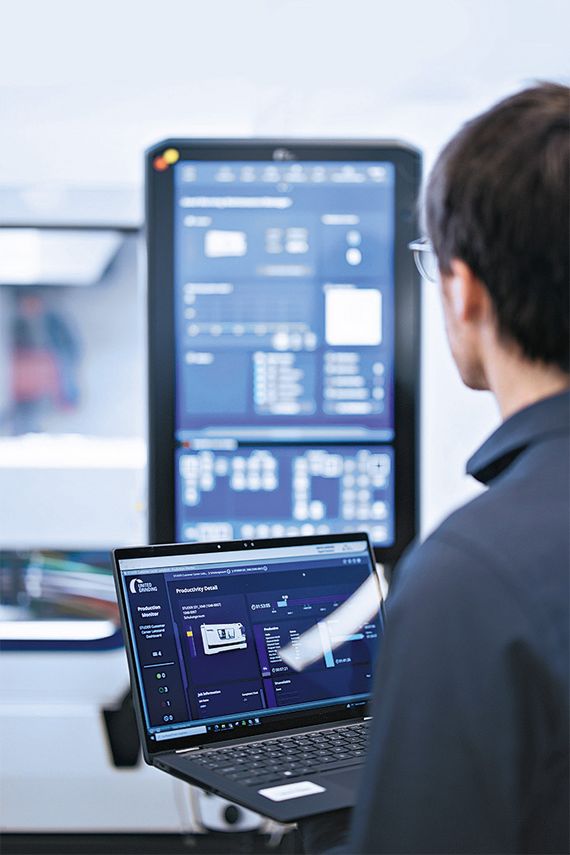
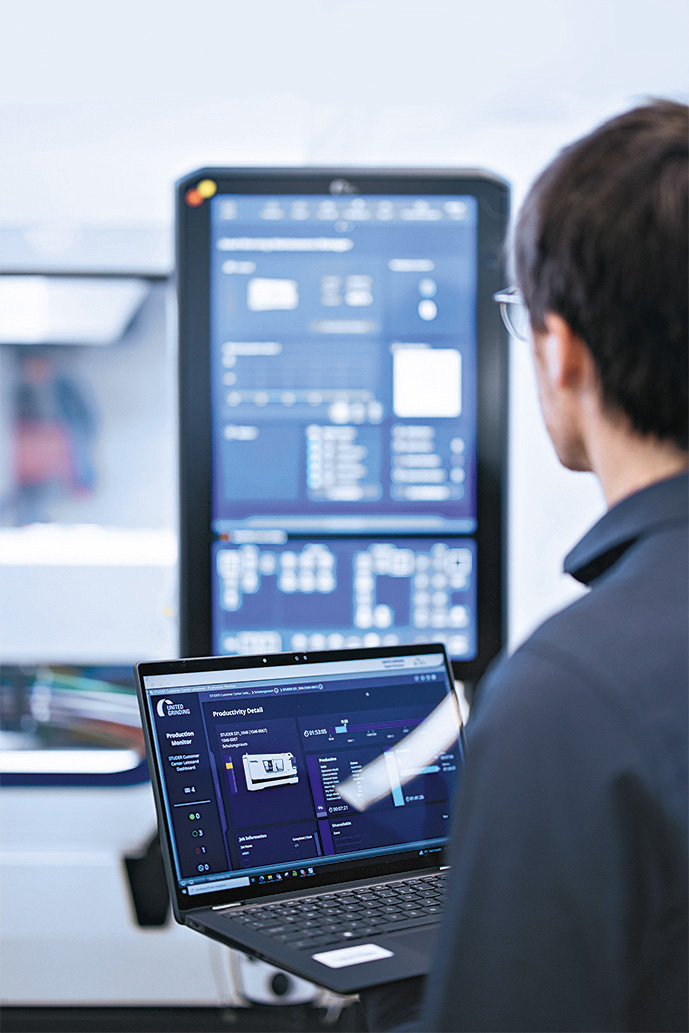

The three stop by a machine with a C.O.R.E. panel; the large touch display is reminiscent of a futuristic smartphone – UNITED GRINDING’s new cross-brand hardware and software architecture is installed on an increasing number of machines. “With its intuitive operation, smart networking, process visualization, and digital assistance systems, C.O.R.E. is revolutionizing the way grinding machines are handled,” Josi explains. Creating this technology was also only possible through the exchange of expertise and ideas (“Motion” reported in detail in issues 1/2021 and 1/2022).
Josi leads the team responsible for the umati (Universal Machine Technology Interface) communication protocol, an initiative of the German Machine Tool Builder’s Association (VDW). This allows C.O.R.E. to even communicate with machines from other manufacturing companies. “Imagine what would happen if people just did their job without sharing information and learning from each other. No team can function sustainably under those conditions! It has to be the same with machines,” he explains. It is therefore important in cases like this that, in spite of competition, manufacturing companies take an active part in developing, standardizing, and standards in order to advance the industry as a whole. “For us, the focus is always on the customer – because we want to make them even more successful and offer them sustainable solutions and future-proof investments,” explains Josi.
However, the creative and professional exchange is not just important within the corporate group. Thanks to its close links to industry associations, educational institutions, and research institutes, UNITED GRINDING is always close to the latest developments and innovations. For example, Engelfried’s idea for the radar sensor led to a research project he led with the Technical University of Braunschweig and the Fraunhofer Institute for Applied Solid State Physics via a tender from the VDW. “After two and a half years, the radar sensor’s functionality has now been proven for this specific application,” he says.
Cooperation serves customers
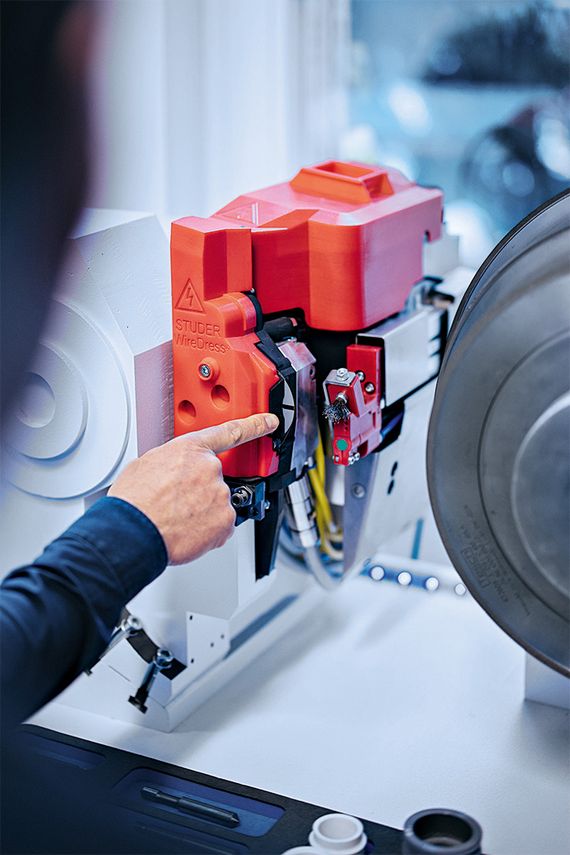
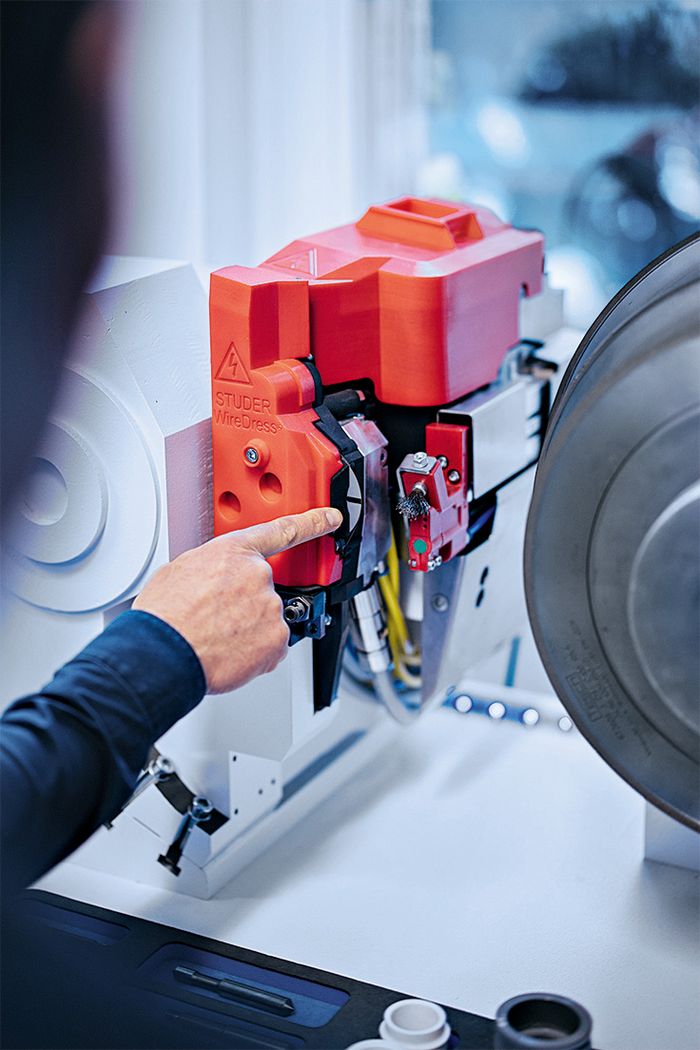
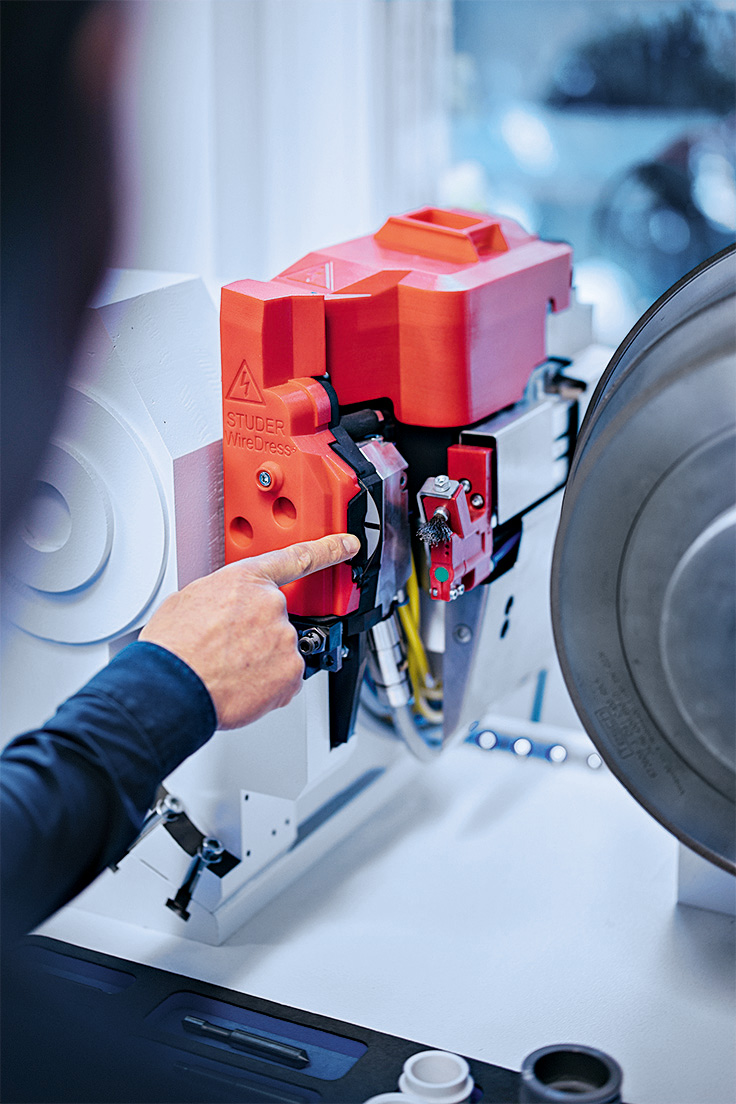
Fiebelkorn, who is chairman of the “Grinding Technology Working Group” at the VDW, also emphasizes that the cooperation between industry and research institutions ultimately directly benefits customers. “This is the only reason we are able to repeatedly set standards in technology, quality, and precision throughout the industry.” For example, the STUDER WireDress® dressing process for metal-bonded CBN and diamond grinding wheels, is particularly suitable for use in e-mobility. This process is so good that it is now also adopted by others in the industry. But thanks to its in-house development, the UNITED GRINDING Group has a head start, and the latest generation is already here. In addition, a joint project is currently underway between STUDER and the Laboratory for Machine Tools and Production Engineering (WZL) of RWTH Aachen University for the development of a new assistance system that can provide operators with realistic forecasts of the process and component quality thanks to state-of-the-art sensor technology. The X-ray measuring head on the S41 for correct alignment of silicon crystals for wafer manufacturing in chip production is also the result of developments in cooperation partnerships. “In this way, STUDER makes an important contribution to the production of computer chips, because our cylindrical grinding machine can correctly align silicon or silicon carbide blanks for further processing based on their internal crystal structure thanks to its X-ray sensor,” says Fiebelkorn.
Laser Contour Check was created in a team
This cooperation philosophy has also led to WALTER’s innovative measuring method, which sets new standards throughout the industry: Laser Contour Check. This is a smart laser system directly integrated into the tool grinding and eroding machine for highly accurate, non-contact measurement of contours on cylindrical cutting tools. Previous comparable systems only worked selectively and were not able to scan the entire contour of a cutting edge. The WALTER technology with the more exact blue laser light is precise and, due to its wavelength, significantly less sensitive to coolant residues on the tool surface. Engelfried explains that the entire measured tool contour can be automatically corrected in the process, and he attaches particular importance to one aspect: “This kind of highly innovative development is not possible when working alone.” Often, it is only at a meeting like the one today that it is decided for which company of the UNITED GRINDING Group a new technology is ideally suited. Laser Contour Check, for example, initially began at STUDER, was further developed at WALTER, and is now in use in its machines. “By the way, the best ideas are often sparked in break-time conversations during meetings like the one today,” laughs Thomas Engelfried.
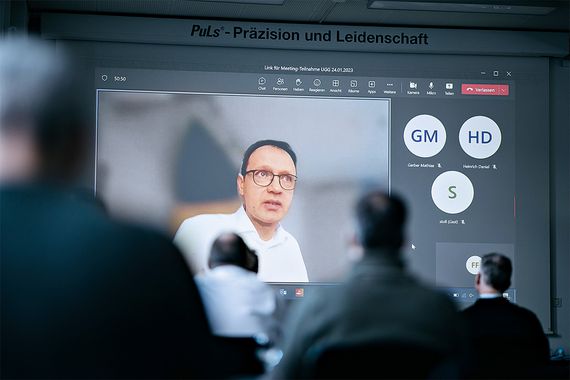
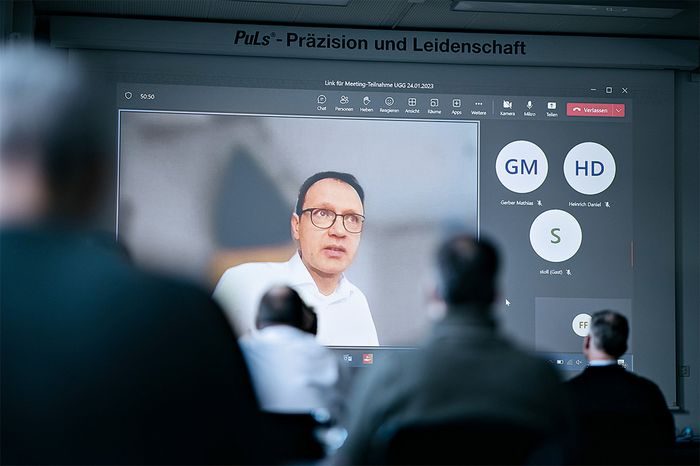

A balancing act between basic research and application
The three colleagues are now finishing their tour of the TechCenter and returning to the large conference room. They are now looking forward to the presentation by their colleague Arne Hoffmann, who heads the “Project Engineering and Technology” department at BLOHM JUNG. His picture appears large on the wall as he participates via live video stream. Among other things, Hoffmann talks about the balancing act between basic research and application development, which is often required in his day-to-day work to build tailored systems for customers. Together with the Leibniz Institute for Materials-oriented Technologies (IWT) at the University of Bremen, BLOHM JUNG is currently planning a project with an algorithm that can predict grinding burn based on sensor data already available in the machine. Another project with the Laboratory for Machine Tools and Production Engineering (WZL) of RWTH Aachen University intends to use sensors to predict the correct dressing moment for grinding wheels. “In the best case scenario, there is a multiplier effect, in which a specific development can subsequently bring the industry forward as a whole,” explains Hoffmann. Particularly in the field of electromobility and the streamlining of supply chains, he sees great opportunities for manufacturers of grinding and machine tools due to the new requirements.
Brewing news ideas
After Hoffmann’s presentation, everyone talks informally again during a break, exchanges ideas, and small groups form on different facets of the topic. In the end, Frank Fiebelkorn says goodbye to all participants and wishes them a safe trip home to their companies. Now many new ideas are brewing for future cutting-edge and enhanced GRINDING technologies, which will benefit all customers of the UNITED GRINDING Group.



